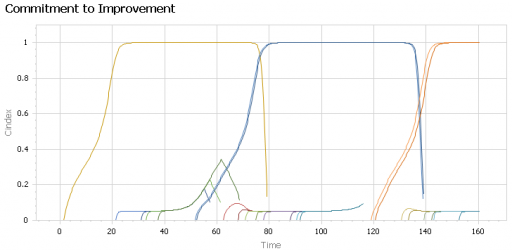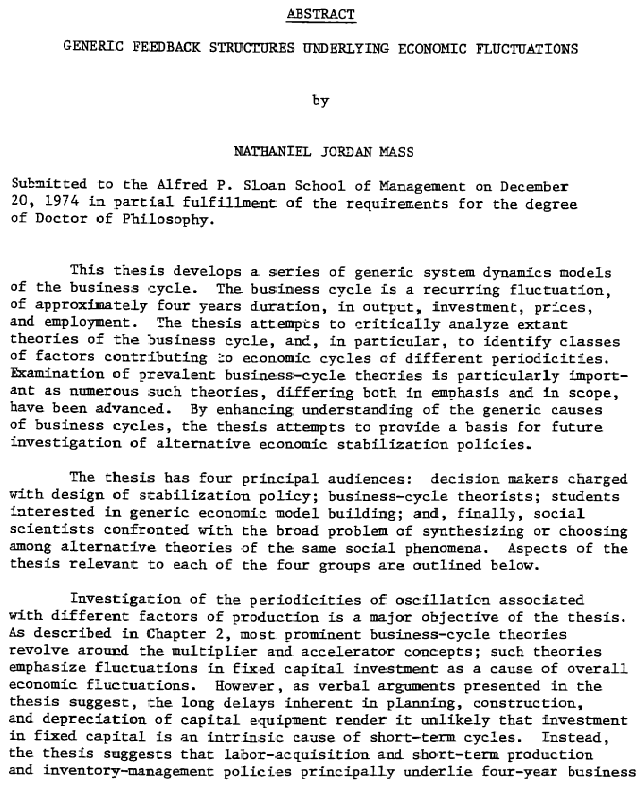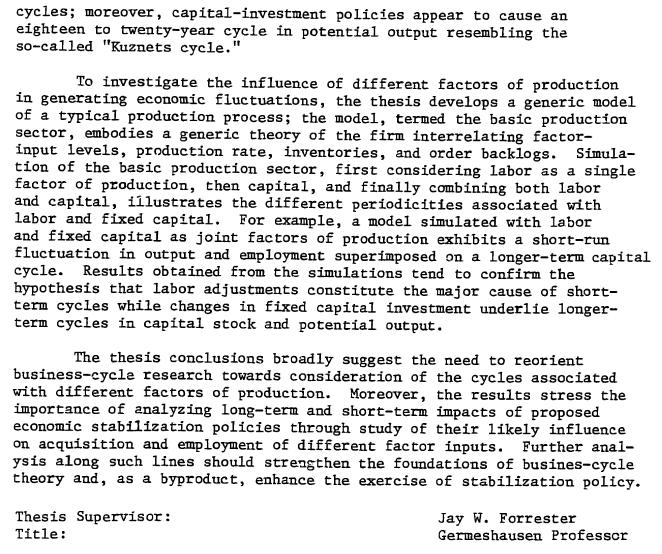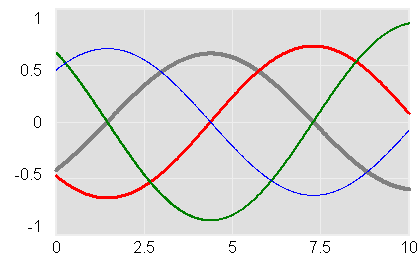This is a new replication of a classic model, for the library. The model began in Nelson Repenning’s thesis, and was later published in Organization Science:
A Simulation-Based Approach to Understanding the Dynamics of Innovation Implementation
The history of management practice is filled with innovations that failed to live up to the promise suggested by their early success. A paradox currently facing organizational theory is that the failure of these innovations often cannot be attributed to an intrinsic lack of efficacy. To resolve this paradox, in this paper I study the process of innovation implementation. Working from existing theoretical frameworks, I synthesize a model that describes the process through which participants in an organization develop commitment to using a newly adopted innovation. I then translate that framework into a formal model and analyze it using computer simulation. The analysis suggests three new constructs—reversion, regeneration, and the motivation threshold—characterizing the dynamics of implementation. Taken together, the constructs provide an internally consistent theory of how seemingly rational decision rules can create the apparent paradox of innovations that generate early results but fail to produce sustained benefit.
An earlier version is online here.
This is another nice example of tipping points. In this case, an initiative must demonstrate enough early success to grow its support base. If it succeeds, word of mouth takes its commitment level to 100%. If not, the positive feedbacks run as vicious cycles, and the initiative fails.
When initiatives compete for scarce resources, this creates a success to the successful dynamic, in which an an initiative that demonstrates early success attracts more support, grows commitment faster, and thereby demonstrates more success.
This version is in Ventity, in order to make it easier to handle multiple competing initiatives, with each as a discrete entity. One initialization dataset for the model creates initiatives at random intervals, with success contingent on the environment (other initiatives) prevailing at the time of launch:

This archive contains two versions of the model: “Intervention2” is the first in the paper, with no resource competition. “Intervention5” is the second, with multiple competing initiatives.







